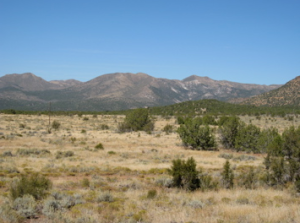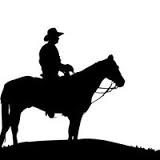I’m too busy watching the Free National Archives Online Genealogy Fair to Blog this week . You can use the following link then subscribe to their YouTube Channel and learn about the treasures you can find in the U.S. National Archives.. http://www.archives.gov/calendar/genealogy-fair/
Archive for October, 2014
U. S. National Archives Online Genealogy Fair
Posted in Uncategorized, tagged Archives, genealogy, NARA on October 28, 2014| Leave a Comment »
Oh! Give Me Land!
Posted in Uncategorized, tagged Genealogy Documents, Land Records, Public Domain Land, Research Helps on October 21, 2014| Leave a Comment »
 While preparing to teach a class last week on Google Earth and Land, I revisited the BLM website If you are searching for an ancestor in the US this site is worth a visit. See http://www.glorecords.blm.gov/
While preparing to teach a class last week on Google Earth and Land, I revisited the BLM website If you are searching for an ancestor in the US this site is worth a visit. See http://www.glorecords.blm.gov/
The site is free, [your tax dollars at work], and contains land patents, military bounty land warrants, and land grants as well as credit entries, mining and timber claims and homesteads, for the United States. Land patents give information about people who obtained the title to their land directly from the federal government.
Millions of land patents are available and include the years from 1788 to the 1960s. Patents show the name of the patentee, date, legal description of the land, patent number, and the land office that issued the patent. This information can be used to obtain land patent application papers. You can order the applications papers if you wish to get more information about an ancestor. The applications may contain information about family members, where an ancestor resided previously, citizenship applications, Family Bible pages, marriage or death certificates, and affidavits.
I searched for Oliver Woodward in Ohio, whom I knew had received Bounty land for his Revolutionary War service. I found several records for land that he had received, and when I opened the ‘related documents’ tab, I also found deeds for his sons Elihu and Oliver Jr., plus a deed for Mary Corner, Oliver Jr.s second wife. In addition, I found two deeds for William Corner, the father of Mary (Corner) (McGrath) Woodward.
Scroll down the page to reveal a map and the land description that includes, the Meridian, Section, Township and Range, with a map showing below. Check the land description box and your ancestor’s land will be placed on the map
I love land records for the wealth of information they can provide, and for their placement of a person on the earth in a specific place at a specific time. I recently helped index some early deeds from Rehoboth Massachusetts. I knew my family had lived in Rehoboth for nearly 200 years, but was delighted to find a deed signed by the town purchasers on the 28 June 1653. It was signed by 41 men and 8 of them were my direct ancestors.
How To Build A Brick Wall
Posted in Uncategorized, tagged Beginning Genealogy, genealogy, Research Helps, Research logs on October 13, 2014| Leave a Comment »
In Family History we sometimes find ourselves unable to move our research back another generation. We often call this a ‘brick wall’. In order to deconstruct the wall, and achieve some success, we need to understand how the wall was built. Here are the most common reasons
- Not understanding there was probably at least one other person, if not more, with the same name as your ancestor, living in the same area. You need to understand the area your family came from and be familiar with why documents were created. [HINT: work with a timeline of your ancestor to help sort him from the others – they all had the same names.]
- Not having enough sources. You will need several sources to make valid conclusions – one or two is not usually sufficient. [HINT: Every event needs a date, a place and a source]
- You copied your family pedigree from another family member, and ‘assumed’ that it was correct. Copying means that dates, names and places can be transcribed in error, and if the people you copied from also copied their records from someone else, then the possible problems can duplicate quickly. Errors in previous research make a great brick wall.
- If the records don’t match what we already believe, we develop a theory of why they don’t, because we are unwilling to change our minds.
- Your family has told you that you come from a ‘famous historical figure’ so you try to make all of your research prove that point, and even jump a generation to get where you want to be.
- Relying on published genealogies. Forget for a moment that there were some early fraudulent genealogies published, from which many families have based their lineage. Just the fact that many online pedigrees are not sourced should make you suspicious.
- Failure to track your family through every possible census.
- Believing, without proving, the family legend.
- Failing to look at the people that surrounded your ancestor. If you are looking for a needle in a haystack, in this case your ancestor is the needle, to find him, you need to make the needle bigger. Look for siblings, children, in-laws- neighbors who were part of your ancestor’s circle.
- Failing to understand that your ancestor was probably normal, meaning they did the things that others in their area did. If the age for owning land was 21 – then your ancestor, most likely, didn’t own land until they were at least that age.
- Moving back in time too quickly. Our ancestor came from England so we start there. You need to start at your last FACT. That means an event that has been proven, and then locate where in England you need to look before upi leap across the pond.
I could add other reasons, but these are the most common. Use a timeline, make sure what you are finding fits into that timeline, and evaluate carefully if you want more success in your searches. Oh- I almost forgot, and yes I know I say this all the time– keep a research log.
When Family Legends Meet the Facts
Posted in Uncategorized, tagged Family History, genealogy, Norman Bliss, Pioneers on October 4, 2014| Leave a Comment »
 Family legends are fun to pass down, often they are true, sometime they have truth woven in them and then there are the other times.
Family legends are fun to pass down, often they are true, sometime they have truth woven in them and then there are the other times.
My grandfather’s older sister was an early pioneer, who came across plains as a baby in 1848, or maybe not.
What we thought we knew: Norman Bliss and Elizabeth Ann [Betsey] (Bird) married in Nauvoo Illinois in 1846. They were driven out by mobs and fled with other Mormon Saints to Winter Quarters where their only child, a daughter Mary Ann Bliss was born. Norman and Elizabeth [Betsey] soon divorced. She married a man at Winter Quarters named George Bryant Gardner, with whom she had 3 more childre
The story goes that when Betsey divorced Norman in 1847-1848, she left Mary Ann, who was 18 months old for him to raise. As they crossed the plains, a lady by the name of Kalain took care of Mary Ann. When a rest was called Norman would go to the wagon and take Mary Ann in his arms and love on her and sing to her. When they camped for the night, he would take Mary Ann and his older son Orley with him until morning.” I always had a picture in my mind of my great-grandfather cradling his baby girl every evening as trekked west. It is a very sweet, sentimental tale with a problem. The documents don’t support the story. Mary Ann was not on that wagon train with Norman, and neither was anyone with a name that could possibly be the mysterious ‘Kalain’. See http://history.lds.org/overlandtravels/ for the wagon trains and passengers.
FACT: Norman and Orley came in 1848 with the second Brigham Young Company. Orley, who was around 7 or 8, drove a team and wagon, while his father drove a second team. There was no Mary Ann traveling with the company.
FACT: Mary Ann come west in 1850 with the Wilford Woodruff Company. Also in that Company was her mother Elizabeth [Betsey] Ann Gardner, her second husband George Bryant Gardner, and their daughter Emily. Mary Ann was 3 years old – quite young but not a baby.
FACT: Sometime after they arrived in Salt Lake, Betsey divorced George Bryant, married Kimball Hardy, and gave Mary Ann to her father Norman to raise. Betsey then married a man named Kimball Hard. They lived in Salt Lake for a few years and then moved to California – not taking Mary Ann with them. See Salt Lake City 1856 Census.
Somehow the romance is gone from the story. No cowboy lovingly cradling and singing to his baby girl at the end of each day’s ride, and no woman on the wagon train taking caring of the baby, Mary Ann.
It is much more likely that after the divorce, since both Betsey and Norman were living in Winter Quarters, that he often saw his baby and held her and sang to her. However, it didn’t happen on the trail, and they did not come west together.
Many family stories have some truth in them. Unfortunately for this one the documents and reality don’t fit the tradition. Do your favorite family stories make sense? It doesn’t matter so much who is right, as it matters what is right.Try documenting them and find out, but be careful, I still have some family members that are not happy with what I found.

